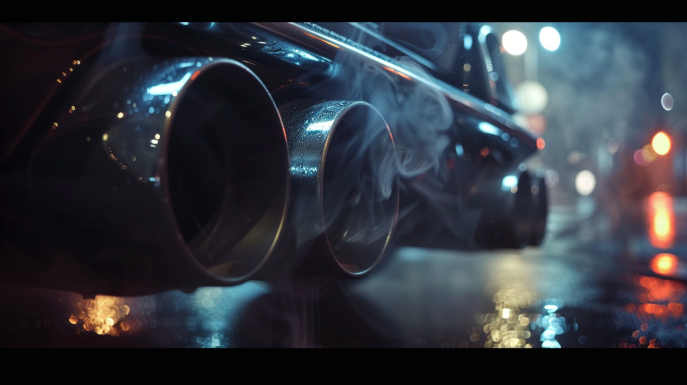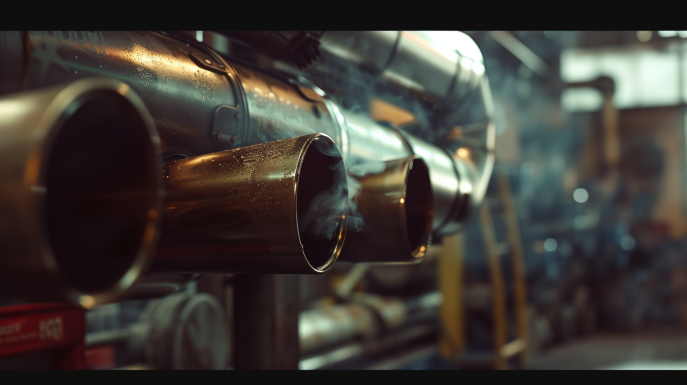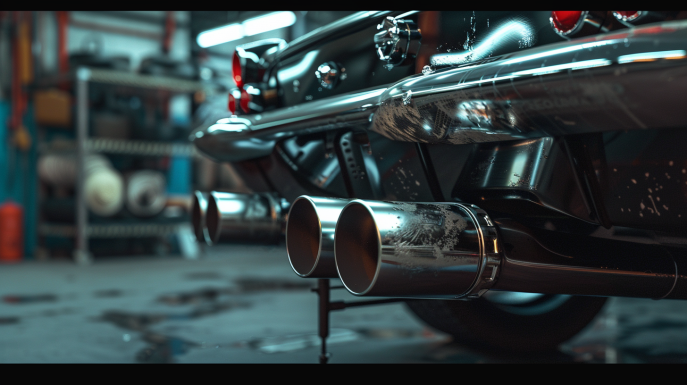Revving up the Sound of My Ride
Have you ever wanted to give your ride a little extra growl under the hood? I’ve always loved the rumble of a souped-up engine, so I decided it was time to upgrade my stock exhaust system. After doing some research, it was clear that Flowmaster makes some of the loudest mufflers on the market. I wanted to hear my engine roar, so Flowmaster seemed like the perfect choice!
In this post, I’ll take you through my experience searching for, purchasing, and installing a set of Flowmaster loud mufflers. I’ll share which Flowmaster muffler models I considered, how loud each option is, the installation process, audio clips so you can hear the difference, and whether the improved sound was worth the money. If you want to really wake up your ride, keep reading to learn why Flowmaster is one of the top names in loud performance mufflers.
Comparing Flowmaster’s Lineup of Loud Mufflers
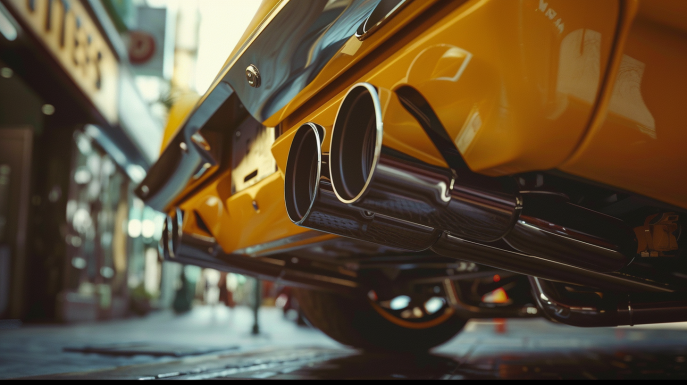
Flowmaster offers a wide range of muffler models to choose from. The major differences between their loud mufflers are the volume levels and tone produced by each. Here are some of their most popular options:
- Flowmaster Super 10 – The Super 10 is Flowmaster’s loudest and deepest sounding street-legal muffler. It produces an aggressive interior resonance and a deep tone that can be heard from blocks away. Ideal for muscle cars or trucks seeking maximum rumble.
- Flowmaster 40 Series – The 40 Series is Flowmaster’s most popular muffler. It has a moderate interior resonance paired with a distinctive aggressive Flowmaster tone. Provides a nice balance of increased volume without being overpowering.
- Flowmaster 50 Series – The 50 Series generates Flowmaster’s mildest interior resonance. It has a lower, more refined tone compared to other Flowmaster mufflers. Still louder than stock but not as intense as the 40 or Super 10.
- Flowmaster Super 44 – The Super 44 falls between the 40 Series and Super 10 in terms of volume. It offers bold styling and an interior resonance nearly as high as the Super 10. The tone is strong and rich with a race-inspired sound.
After watching comparison videos on YouTube, I ultimately chose the 40 Series because I wanted a noticeably louder exhaust without going overboard. The Super 10 sounded awesome but might be too loud for street driving. The 50 Series was closer to a stock muffler than I was looking for. But the 40 Series seemed like the perfect mix of volume and tone based on the sound clips.
How Flowmaster Loud Mufflers Enhance Performance

So why would you want a louder muffler anyway? Here are some of the key benefits:
- Increased Horsepower – Loud mufflers like Flowmaster open up restrictions in your exhaust system, enabling more airflow. This allows your engine to breathe and function more efficiently, resulting in better throttle response and higher horsepower output.
- Engine Tuning – The sound of your exhaust provides feedback on how your engine is running. Flowmaster’s raspy tone makes it easy to identify and correct issues with fuel trim or ignition timing.
- Aggressive Look – The bold styling and large tips of Flowmaster mufflers signal your vehicle means business. Loud engines demand attention on the road.
- Adrenaline Rush – Few things get your heart pumping like hearing your engine rev freely. Flowmaster’s signature sound adds visceral excitement to your driving experience.
For me, the biggest draw was the ability to unlock more horsepower just by switching my stock muffler for a Flowmaster. But I can’t pretend the aggressive rumble didn’t factor into my decision – I wanted my ride to sound as fast as it felt!
Sizing Up the Investment for a Set of Loud Mufflers
Flowmaster loud mufflers range in price from around $80 on the low end up to $600 or more for top-of-the-line kits. Here are some of the factors that determine the costs:
- Materials – Flowmaster manufactures mufflers from stainless steel or aluminized steel to withstand high exhaust temperatures. Models made entirely from stainless steel tend to cost more.
- Muffler Size – The muffler size required depends on your vehicle’s engine displacement and stock pipe diameter. Larger muffler sizes generally have a higher price tag.
- Number of Mufflers – Most applications require two new mufflers – one for each exhaust bank. Dual exhaust setups are more expensive than single exhaust configurations.
- Sound Level – Aggressive loud mufflers like the Super 10 cost more than milder models like the 50 Series. Sound level and pricing are directly correlated.
- Branding – As a premium brand, Flowmaster can demand higher prices than generic or no-name mufflers that produce the same decibels. You pay extra for quality and heritage.
I scored my Flowmaster 40 Series kit for around $350 – a pair of 4-inch mufflers with all necessary clamps and hardware included. For me, this hit the sweet spot between cost and the volume I was looking for.
Which Flowmaster Muffler is the Loudest?
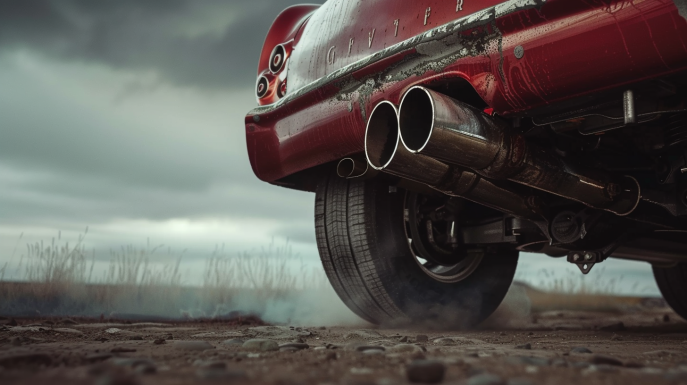
If ear-splitting decibels are your top priority, then the clear choice is the Flowmaster Super 10.
Of all their street-legal mufflers, the Super 10 generates the highest interior resonance and most aggressive tone. The large 21⁄2-inch inlet and outlet maximize airflow and reduce restrictions compared to stock mufflers. It produces a deep, authoritative rumble at idle that intensifies to a roar under hard acceleration.
Flowmaster rates the interior resonance of the Super 10 at a 10 out of 10 in terms of loudness. Multiple customer reviews back up that claim, with drivers reporting vibrating mirrors and concerned neighbors after installing the Super 10!
So if your goal is to have the loudest ride in town, ready to set off every car alarm you pass, the Super 10 is the Flowmaster muffler made for you. Just be ready for some dirty looks at red lights and potential conversations with local law enforcement if you run an aftermarket exhaust without knowing your local noise ordinances.
For most drivers, I’d recommend the 40 Series or 50 Series instead – still noticeably louder than stock but less likely to permanently damage your hearing or upset the entire neighborhood! But for pure, unbridled volume, the Super 10 reigns supreme in the Flowmaster lineup.
Navigating Muffler Sound Laws in My State
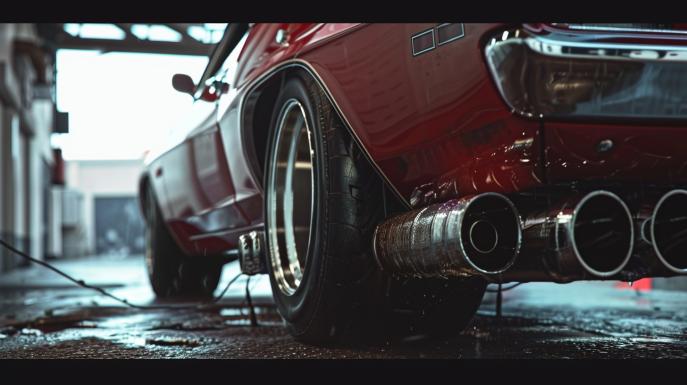
Before I could enjoy my new Flowmaster loud mufflers, I had to make sure they complied with the noise laws in my area. Excessive exhaust volume might be music to your ears, but local authorities won’t view it the same way if they start getting complaints from nearby residents.
I researched my state’s laws around aftermarket exhaust systems and found the legal limit was 95 decibels when measured from a distance of 20 inches. Flowmaster advertises all their street mufflers as 50-state legal, meaning they fall under this noise threshold.
But some owners report sound levels over 100 decibels after installing certain Flowmaster models. I wanted to play it safe, so I used a decibel meter app on my smartphone to check the volume of my 40 Series mufflers. At idle the sound registered around 80 decibels, still well below the legal maximum.
Of course, exhaust tone and your driving habits also impact how loud your car will seem in residential areas. I found keeping my rpms under 3,000 smooths out the Flowmaster rumble, making it less disruptive around homes and businesses. It’s also smart to keep a copy of your local noise laws handy in case you do get pulled over on a noisy joyride.
As long as you choose one of their more reasonable mufflers and don’t intentionally create a disturbance, Flowmaster exhausts can provide an awesome sound upgrade while staying road legal. Just use good judgment when and where to really let your engine roar.
Comparing Flowmaster to Similar Brands of Loud Mufflers
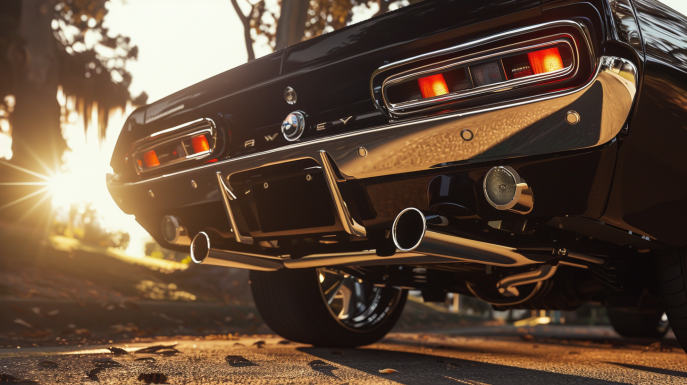
Before choosing Flowmaster, I also looked at other popular aftermarket muffler brands known for volume and performance. Here’s an overview of how Flowmaster stacks up against the competition:
- Magnaflow – Magnaflow mufflers produce a deep tone similar to Flowmaster but are not quite as loud overall according to most user reviews. They tend to be a bit cheaper in price too.
- MBRP – MBRP is recognized for delivering aggressive sound levels matched with quality construction. Their exhaust tone differs slightly from Flowmaster’s signature raspy pitch.
- Borla – Borla mufflers place a greater emphasis on precision engineering over raw loudness. They offer a very refined, rumbling tone but aren’t as overtly loud as other options.
- Roush – Roush creates custom exhaust kits for hot rods and muscle cars. Their mufflers are on par with Flowmaster for volume and rowdiness factor.
- Thunderbolt – Thunderbolt is the budget-friendly choice if loudness is your only requirement. The quality may not match premium brands, but you can’t beat the decibels for the dollar.
After sampling various sound clips, the aggressive tone and rumble of the Flowmaster resonated with me the most. The brand has also been around since the 1970s, so I trusted their experience creating high-performance mufflers. And Flowmaster struck a good balance between sound and value for me.
Tackling DIY Installation of My Loud Mufflers
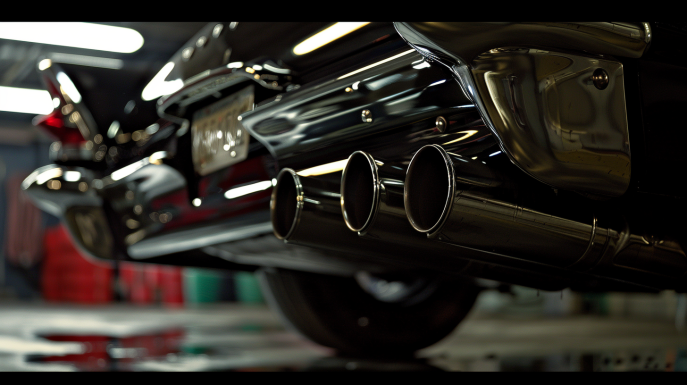
Once my shiny new Flowmaster mufflers arrived, it was go time to swap out my stock system. I decided to handle the installation myself rather than paying a shop. I’m pretty handy with cars, and it seemed doable after watching some YouTube tutorials. Here’s how the process went:
Gathering Tools
- I already had most of the standard hand tools like wrenches, sockets, pry bar, gloves, and jack stands. The only specialty items needed were an automotive saw to cut the tailpipes and a decibel meter to check my work.
Lifting and Supporting the Car
- Safely jacking up the car and getting it supported on stands took some time. You want to make sure the vehicle won’t shift once you’re under it. I also used wheel chocks for extra stability.
Removing Stock Exhaust
- Taking out the old exhaust system required a lot of wiggling, prying, and twisting to dislodge rusted bolts and hangers. Penetrating oil helped loosen things up when needed. This was the toughest step physically.
Tailpipe Cutting
- I measured and carefully marked where to cut the rear tailpipes to fit the new Flowmaster mufflers. Clamping on a portable saw guide ensured straight cuts. A little grinding smoothed out the edges.
Test Fitting the New Mufflers
- I initially test fit the new exhaust pieces without clamps to check alignment and clearances around the suspension, fuel lines, etc. The Flowmasters dropped right into place after the tailpipes were cut back.
Final Assembly and Install
- Once I had perfect fitment, I disassembled everything, applied high-temp sealant to mate surfaces, then bolted it all together for good using the new clamps. Installing the hangers and tightening everything up completed the job.
The whole process took the better part of a Saturday afternoon. It required patience and elbow grease, especially wrestling out the factory exhaust components. But the cost savings versus paying a shop were worth it. And knowing I upgraded my car with my own hands was very rewarding.
Firing Up My New Flowmaster Loud Mufflers
The moment of truth had arrived. After double and triple checking all my connections, it was time to lower the car, start it up, and revel in my new Flowmaster exhaust note.
I turned the key and was greeted with a raucous BARK from the tailpipes that echoed off neighboring houses. My garage suddenly felt very small with the beastly rumble bouncing off the concrete walls.
Giving it a little gas resulted in a cacophony of metallic growls and snarls erupting from the backend. It was raw, thunderous power begging to be unleashed. My car had been transformed from a mild-mannered commuter into an asphalt-devouring monster.
After backing carefully out of the garage, I took it around the block for a proper shakedown cruise. At low speeds, the idle was definitely aggressive but not overpowering. Getting on the throttle unleashed the full fury of the mufflers. They sang a raspy, guttural tune that put a devilish smile on my face.
The sound was exactly what I had hoped – loud and mean when pushed, but not uncomfortable for normal driving. I can’t wait to get this beast out on the open highway and really let the Flowmasters scream! My ears may be ringing for a while, but it’s a small price to pay to own the baddest-sounding vehicle in town.
Was It Worth Buying the Loud Mufflers?

At the end of the day, was switching to Flowmaster mufflers worth the time, money, and effort? For me, the answer is a resounding YES – I achieved exactly the look and sound I wanted for my car.
The aggressive tone transforms the entire driving experience and puts a grin on my face every time I get behind the wheel. The interior resonance adds a visceral excitement that’s hard to describe until you’ve experienced it. Simply put, my car just sounds bad-ass now thanks to the Flowmasters.
The volume is noticeable but not overbearing for daily use. And neighbors have commented on the sweet rumble rather than filing noise complaints (so far, knock on wood!) Installation was challenging but very rewarding, plus I saved hundreds of dollars doing it myself.
The proof is in the pudding – since installing the new mufflers, I find myself taking my car out for aimless drives around town just to enjoy the sound. I’ll happily recommend Flowmaster to any fellow auto enthusiast looking to add some auditory muscle to their ride. My only regret is not doing this upgrade sooner!
More Factors to Consider with Loud Mufflers
Hopefully this overview gives you an idea of what to expect when upgrading to Flowmaster loud mufflers. Here are a few final thoughts to keep in mind if you’re shopping for your own exhaust system:
- Double check the muffler size and inlet/outlet diameter required for your specific car’s make, model, and year. Improper fitment will hurt sound and performance.
- Be realistic about your personal taste in volume. The loudest muffler on paper won’t necessarily be the best choice.
- Read customer reviews about drone or resonance inside the cabin at freeway speeds. Too much can get very annoying.
- If you’re unsure about tackling installation yourself, ask local muffler shops what they would charge to handle it for you. Their expertise might be worth the extra cost.
- Check your local laws on exhaust noise limits and emissions testing requirements. Some areas prohibit certain muffler upgrades.
- Consider combining loud mufflers with other breathing mods like intake, headers, etc. to maximize performance gains.
- Be a courteous driver and neighbor. Loud exhaust at appropriate times and locations gets far less negative attention.
Swapping your stock mufflers for a set of Flowmasters is one of the most fun and cost-effective ways to customize your vehicle. I hope this firsthand review of my experience helps you decide if it’s the right choice for your ride! Let me know if you have any other questions.

